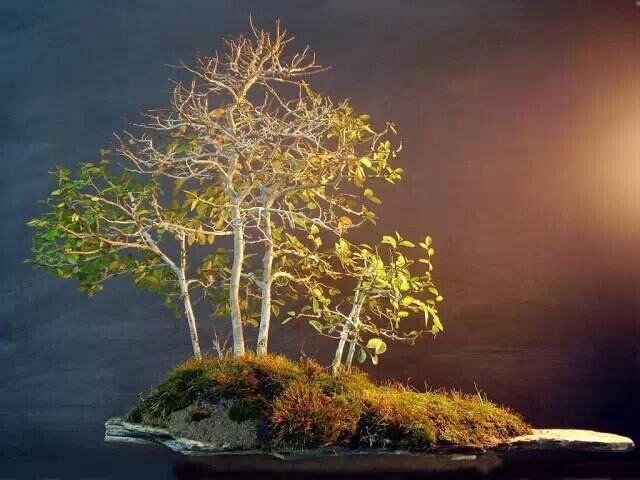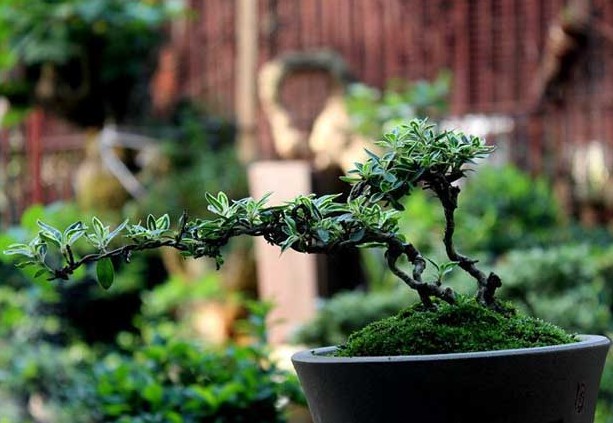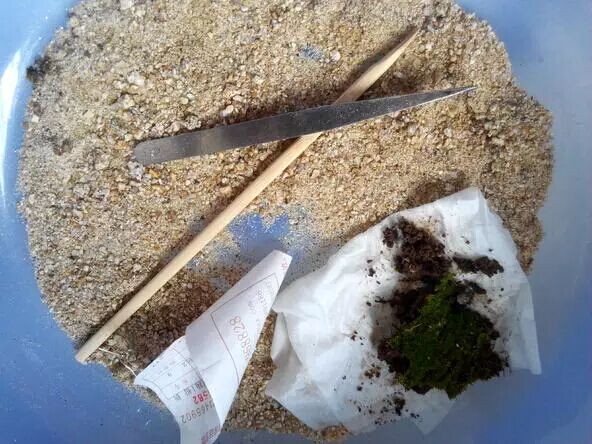How to make co-planting bonsai
The so-called co-planting refers to the cultivation of more than three individual trees in flat or shallow pots to show the forest pattern.

Some even as many as dozens, and with the increase in the number of dried plants, the feeling of lush is more powerful. When planting, each pot is mostly based on the same tree species, because, in this way, it is not only conducive to cultivation, but also looks more natural as a whole. In addition, it is best to select tree species with the same leaf and dry muscle in order to show a unique flavor.
Choose to plant trees:
The general distribution is as follows: main wood, auxiliary wood, and foil wood. If it is small co-planting, in addition to the main wood, other cutting seedlings can also be used.
When shaping the co-planting type for the first time, the 7-stem co-planting is the best. Because the less the number of stems, the easier the cultivation.
Main points of production:
The first way is to plant the main wood to the right or left, followed by auxiliary wood, and then accompany the lining wood. Use the length and thickness of various trees, tree shape, etc., to emphasize the sense of distance and the beauty of coordination. In addition, if it is dry for a long time, several paths can be created to show the shape of the forest.
For co-planted branches, the basic types of straight, curved and oblique stem shall prevail. The sound cultivation of all kinds of trees is the focus of the co-planting type. Because the closer to the outside of the basin, the easier it is to take root, and the roots of most of the trees located in the center are slow, so we should pay attention to the above problems when fertilizing and watering.
At the same time, the development of the root will influence the maturity of the main branch. Therefore, when cultivating, it is best to stretch the root out of the basin. We usually see some beautiful bonsai in large-scale exhibitions or parks, don't we envy them? You can also make it yourself! Co-planting potted plants are planted in flat or shallow pots with more than three individual trees to show the forest pattern. Some even as many as dozens, and with the increase in the number of dried plants, the feeling of lush is more powerful. When planting, each pot is mostly based on the same tree species, because, in this way, it is not only conducive to cultivation, but also looks more natural as a whole. In addition, it is best to select tree species with the same leaf and dry muscle in order to show a unique flavor.
Time: 2019-05-26 Click:
- Prev

Production method of snow bonsai in June
June snow, also known as the stars. It is a small evergreen or semi-evergreen shrub of Rubiaceae. The plant is low, with dense leaves, thin and soft branches, white florets in midsummer, as if covered with snow, with high ornamental value. Snow likes a wet and overcast environment and a warm climate in June. It is not strict with the soil.
- Next

Teach you to make miniature bonsai with light bulbs
The downstairs construction stole some sand, washed it several times, removed the mud, jolted the basin and simply separated the thick and fine sand. Some moss was dug up on the roof (lower right). The light bulb is a small light bulb, about 6 or 7 centimeters in diameter, small, the bedside lamp is broken and removed. First, I installed some rubble, and I used to read the post.
Related
- Fuxing push coffee new agricultural production and marketing class: lack of small-scale processing plants
- Jujube rice field leisure farm deep ploughing Yilan for five years to create a space for organic food and play
- Nongyu Farm-A trial of organic papaya for brave women with advanced technology
- Four points for attention in the prevention and control of diseases and insect pests of edible fungi
- How to add nutrient solution to Edible Fungi
- Is there any good way to control edible fungus mites?
- Open Inoculation Technology of Edible Fungi
- Is there any clever way to use fertilizer for edible fungus in winter?
- What agents are used to kill the pathogens of edible fungi in the mushroom shed?
- Rapid drying of Edible Fungi

